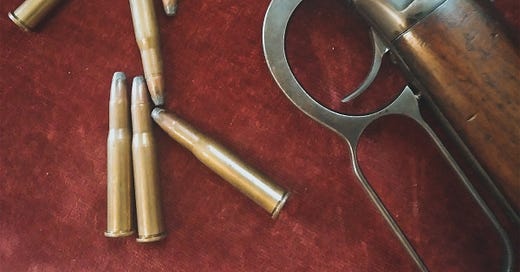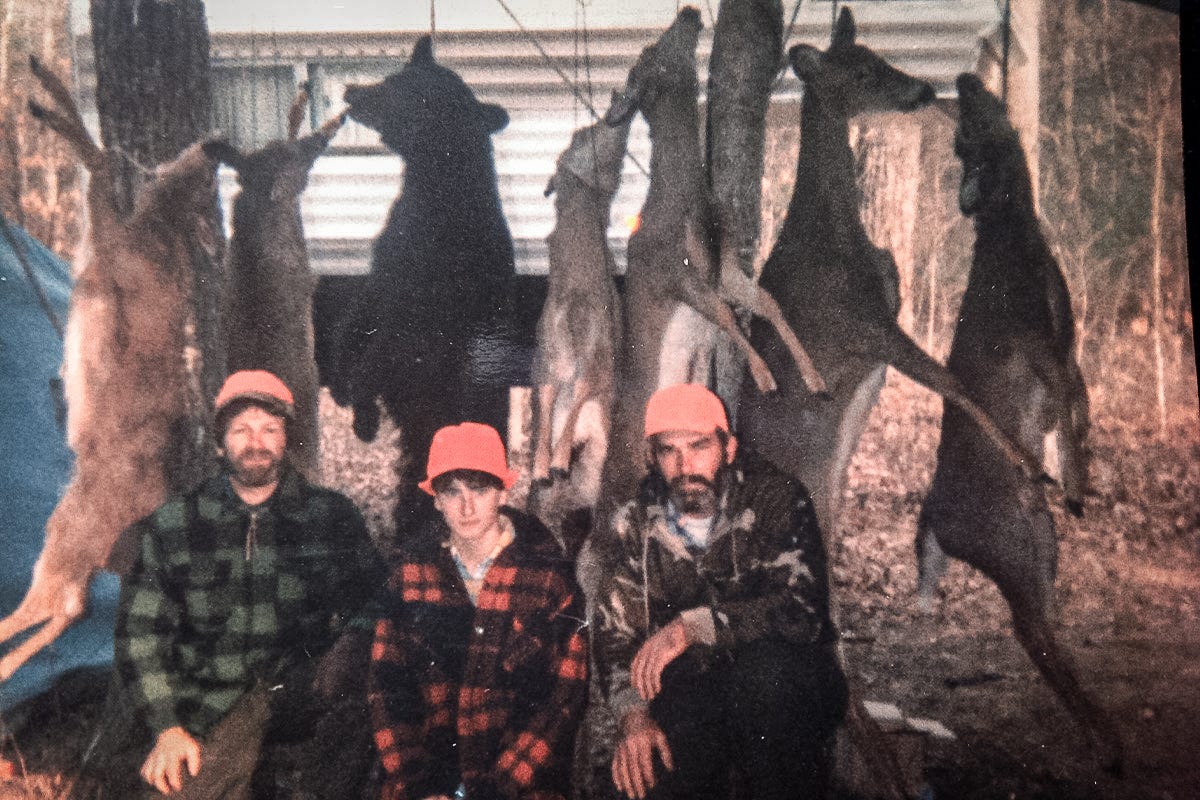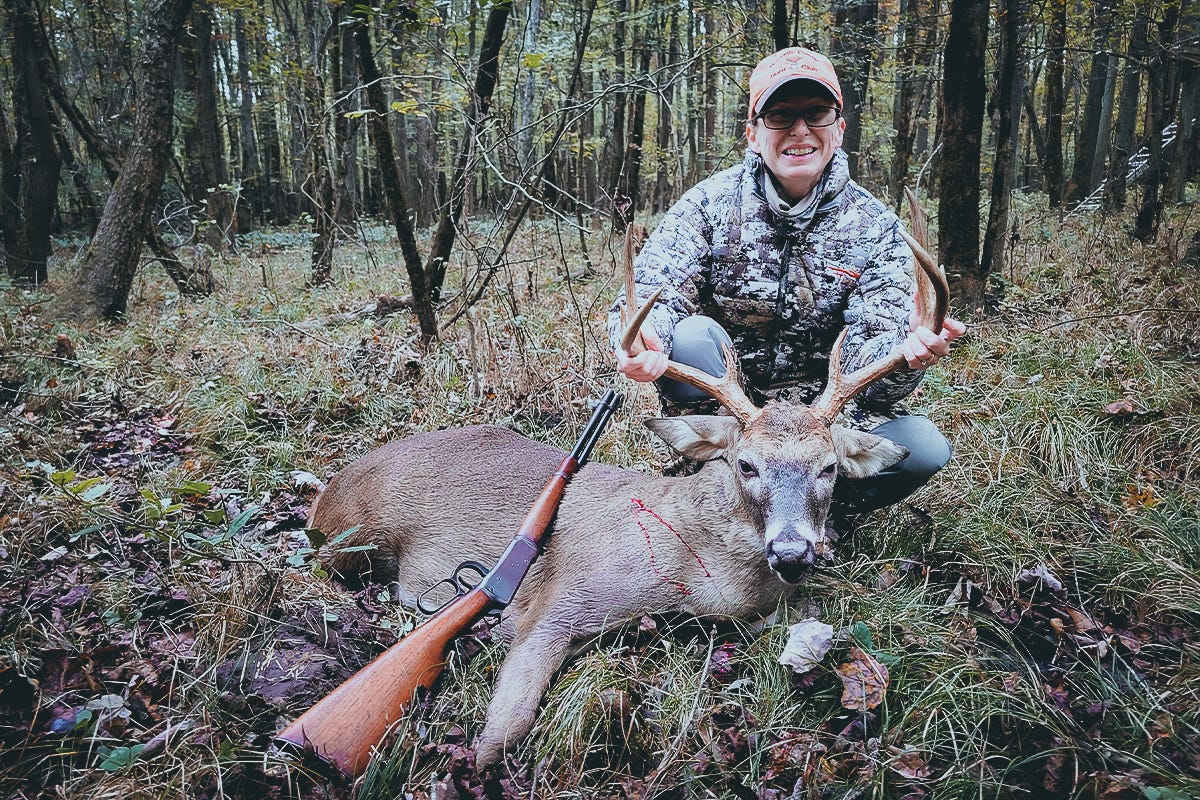I was 19 when my uncle handed me my grandfather’s Winchester Model 94 lever-action.
It was a beat-up .30-30 hunting rifle that looked like it had been dragged behind a truck over a gravel road. It had mostly been sitting in a dusty corner, unused for more than a couple of decades. It was dented and scratched, the blued steel freckled with rust.
My uncle claimed it “had a lot of character.”
I’d had my heart set on a shiny new semi-automatic .30-06, a sleek and sexy grown-up gun, to tote in the woods, one with a high-class scope. I thought that was the kind of firearm that would turn heads at the gun range and the checking station, the kind of hunting rifle that said, “Now, that’s a serious deer hunter.”
My dad had let me carry his beloved .30-06, a Remington Woodsmaster Model 742 with a Bushnell scope, once, while he dragged out a fat doe he’d killed way back in a mountain holler at least a mile and a half from the road. He cussed me the whole way out.
“Holy Hell! If you’re going to slide down the goddamn mountain, could you at least not fall on my rifle?”
We were making memories.
But people older than me decided without my input that a cool new .30-06 would be too much gun for me. At the time, I was a wispy young girl who tipped the scales at a solid 100 pounds, but only after a good meal. So instead, I got a dusty old lever-action cowboy gun.
While I tried to hide my disappointment, it was probably palpable. I honestly didn’t know the value of what had been placed in my hands.
I toted my Winchester Model 94 lever gun to the Virginia mountains that next season.
That top-eject lever action didn’t have the modern high-tech scope I’d hoped for, and Daddy didn’t want to drill into the stock to attach a sling mount, so he tied an old piece of rope around it to form a makeshift sling. I probably looked more like a hobo than a serious deer hunter.
But successful deer hunting isn’t about looks.
On the last day of the two-week season, our camp staged a quick man drive in a desperate, eleventh-hour attempt to fill tags. I Annie-Oakleyed the hell out of two beefy does—quick shots, dead-on, like I'd been born to do it —as they tried to zip past me, hell-bent on getting away from the man drivers hollering through the thick creek bottom they’d been holed up in. I whistled one quick note, and both deer stopped short at 70 yards, confused and looking for the source of the high-pitched tone.
I lined up the front sight with the crease of the bigger deer’s shoulder and pulled the trigger. That shot sent her somersaulting down the ridge, back toward the thick creek bottom she came from, a 150-grain soft point mushrooming through her boiler room.
The shot rang out, and the second doe bolted uphill behind me. I whistled again. No dice—she wasn’t falling for it. I kept my cheek on the stock, swung the rifle past her nose, and squeezed. Missed. Racked the lever. Fired again. This time, the shot sent her sliding back down the ridge to settle just a few yards away from her buddy.
I was a legend that year, the only one in deer camp to put meat on the pole. My dad bragged a blue streak at the checking station that evening, and my young cousin complained about how much he hated our hunt camp.
“Only girls kill deer here.”
And that is how I fell in love with lever guns.
I didn’t realize it then, but everything about that old lever gun was made for the deer hunting I grew up on.
It is super easy to cycle, and with some practice, you can pull off follow-up shots without ever breaking your cheek weld (which comes in handy when the deer run by in pairs, particularly when it’s legal to shoot more than one).
The 94 is also a dependable, lightweight firearm that is easy to tote into rugged, thick woods, where deer like to hide, even if you don’t have a ratchet rope sling.
It also has a near-perfect, fast-handling balance. Its compact proportions and relatively short receiver make it easy to swing on targets moving through thick brush.
Although Model 94 lever-action rifles are well-known for their mild recoil, one chambered in .30-30 Winchester has plenty of knockdown power to take out deer at the most common hunting ranges.
If you aren’t hunting the Wild West with miles of sweeping prairie, you probably won’t get a shot opportunity that stretches much farther than 100 yards. Most deer hunters sit overlooking a well-worn trail, food source, or field. None of those scenarios requires you to shoot a deer standing in the next county over.
Rifles chambered in hyper-velocity cartridges capable of sniper-like accuracy, while admittedly sexy, are overkill for most deer hunters. The ballistics of hot-rod hunting cartridges may make the .30-30 look like a wimp in comparison, but only on paper.
A 150-grain soft point fired from a .30-30 Model 94 is still cruising along at 1,974 fps at 100 yards and carrying 1,298 ft-lb of energy, which is more than enough to drive a deadly mushroom ripping through a whitetail’s vital organs.
And while other cartridges may put up better numbers, the drawback to high-velocity, high-energy rounds is bloodshot meat. When that super-sexy speed demon hits a deer’s shoulder (or any other muscle, for that matter), the impact energy radiates through soft tissue, forcing coagulating blood into the meat you were hoping to serve up for dinner.
Wound channels from faster cartridges can tear up some meat. In comparison, the .30-30 produces minimal meat damage. With most shots, you can dine practically up to the bullet hole.
In an age where putting meat on a deer camp pole was far more important than posting big racks to Instagram, that was a huge measure of success.
That Winchester Model 94 .30-30 might not have been the shiny new semi-auto I wanted, but it was the rifle I needed, and it more than proved its worth as a venison-making machine. Putting deer on a deer camp meat pole is a practical measure of deer hunting success and one that definitely put some serious cowboy swagger in my step that year.
I’ve carried Grandpa’s ‘94 into the deer woods almost every season for the past 30 years, even though there are now newer, fancier, faster-shooting rifles in my safe. It's put more venison in my freezer than anything else. I've learned that shiny rifles may turn heads, but that old lever gun and I earned our swagger the old-fashioned way — by putting meat on the table.







The 94 and 742 are the epitome of deer camp deer/ drive rifles.
That’s a family treasure. I have a similar story about my grandfather’s .30-30.